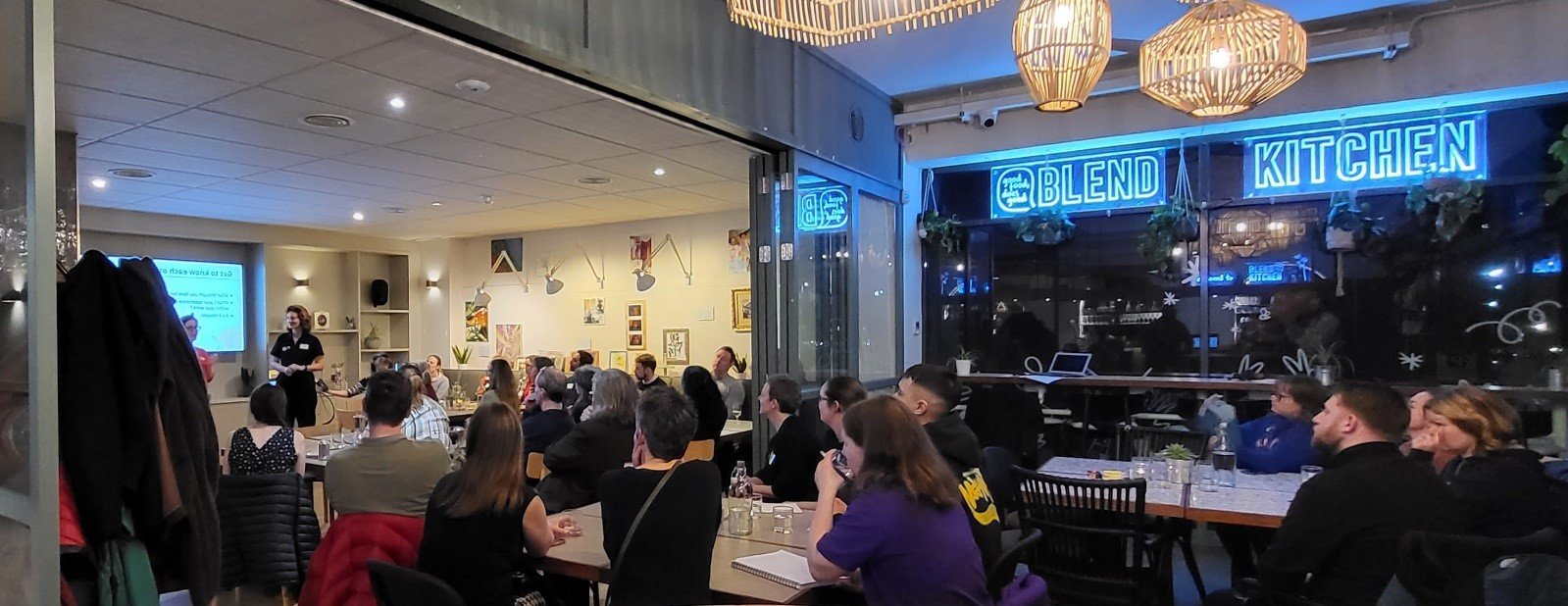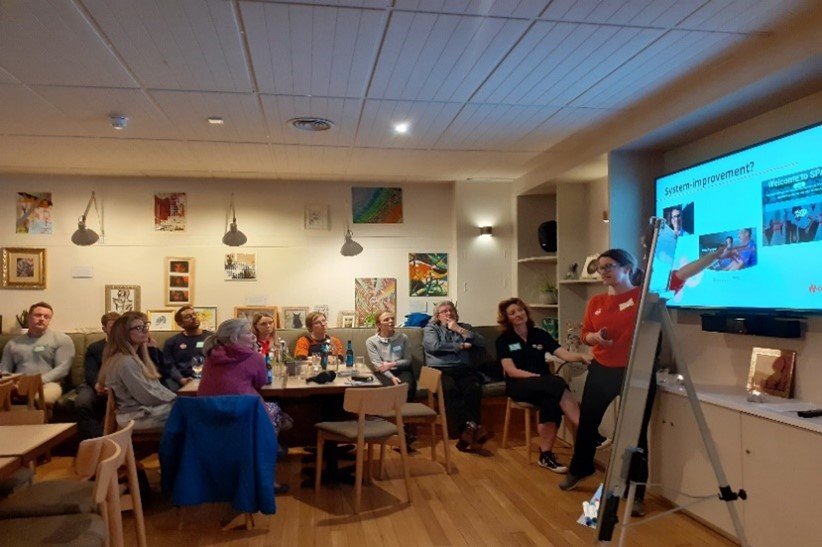Luiz Faye from Kronik Warrior Adaptive Boxing Academy believes there is an element of ‘fear of the unknown’ which can sometimes hinder people, particularly those with disabilities, when it comes to trying new activities. For her it’s about spreading awareness that everyone can enjoy boxing in some format, regardless of body conditions and impairments.
This is the importance of these events, to show people with disabilities that there are so many sports which are accessible to them. As Luiz says: ‘You literally see people’s eyes open up when they realise the possibilities.’
Gareth Davis, Head of Region for Yorkshire Cricket Board, agrees that the ‘Move More’ is about showcasing what is available in sport for people with disabilities. He has attended previous events at the EIS and provided inclusive activities such as table and softball cricket.
His goal is to just get more people playing; girls, boys, people with disabilities and of all age groups, making it inclusive for all. There are opportunities to go right through as England have a Physical Disability side for amputees and wheelchair users, as well as Visually and Hearing-Impaired Teams, but at base level it’s more about just connecting people, having fun and promoting physical activity.
Their sessions for children are fully adaptive and sometimes just involve a bat and a balloon, but as Gareth points out, ‘That’s their form of cricket, and that’s fine.’
Also present at the two-day event were Niamh Mourton and Angela Lyndon from the Special Olympics Motor Activity Training Programme (MATP) which is a movement-based sports programmes which provides meaningful sport and physical activity for young people with profound disabilities and complex needs.
They had set up a Sensory Circuit based on the core MATP skills: mobility, dexterity, kicking and striking, and were supported by some fantastic PE students from UTC college who helped on the different stations, and with just adapting the activities, breaking them down in a fun way so that participants could engage in the movement and just have fun. As Niamh says: ‘It’s about educating people on what they can achieve and catering for every single disability so that everyone can get involved. Young people who take part in the programme also get chance to come to a Challenge event at the EIS, which is in front of a crowd, and where they showcase what they have learned, at whatever level that may be.
As Angela said: ‘It’s about celebrating their achievements, but also about coming together to support each other.’ She related a story of one athlete who was struggling at the event and his mum got the assembled crowd to sing his favourite song, ‘If you’re happy and you know it’ to motivate him, and so that camaraderie and support is so important.
Julie Grafton has been running the Cycle Happy Club in Sheffield for five years alongside her husband. Both enthusiastic cyclists, they decided to set up the club, which promotes cycling for people with learning difficulties, after their daughter was a competitor at the Special Olympics.
She was grateful for the support of Dawn Wood at Links SSP/SCT who assisted her with applying for funding which allowed them to purchase a fleet of bikes, trikes, and balance bikes which they could adapt for people with disabilities.
As Julie attests though it’s not just about learning to ride a bike, it’s about health and fitness and being more physically active. One of their children was borderline needing hip replacement surgery, but since taking part in the strengthening and aerobic activities provided by the club their condition has apparently improved dramatically.
Cycle Happy has also had a significant impact on Niall Guite, a young man with learning difficulties, who had an obvious aptitude for cycling. Having recognised this, the club referred him to the Youth Team to instigate further appropriate training in competitive cycling and he eventually went on to compete in cycling at the Special Olympics. Julie and the club are obviously immensely proud of the achievements of their ‘celebrity’ and were delighted when he returned to show his medals in the hope of inspiring other young people at the club.
Phillimore Community Primary School brought by far the biggest contingent to the event with some 60 pupils in attendance alongside their PE leader Jo Searle. The impact of these events on the children is huge, according to Jo, in terms of broadening their horizons.
Eight-year-old Aya described the day as ‘amazing’ and couldn’t wait to tell his parents all about it, and particularly how much he had enjoyed the table tennis. He said: ‘I didn’t really know how to play until after practice but then I got really good.’
Mohammed was also full of praise for the event and commented that, ‘today I had a really good day, the best day of my life’. Jo advised that some of the children had also been given information slips relating to clubs they could join at EIS as pathway to community activities, proving again just how far reaching the effects of these events are.
For Tom Hughes the event is the most inspiring and rewarding that they host in Sheffield, and he is justifiably proud of the achievements of a brilliant network of disability partners who bring these events to life. Whilst it’s hard - Tom says ‘at times a little like organised chaos’ - everybody embraces it.
There can be no doubt that the event was hugely rewarding and beneficial for all involved, and final word has to go to 8-year-old Isa, who said: ‘I just want to say thank you to you, and all the teachers and parents and organisers for this day because you’ve made us all so happy. I wish we could come every day’.







































